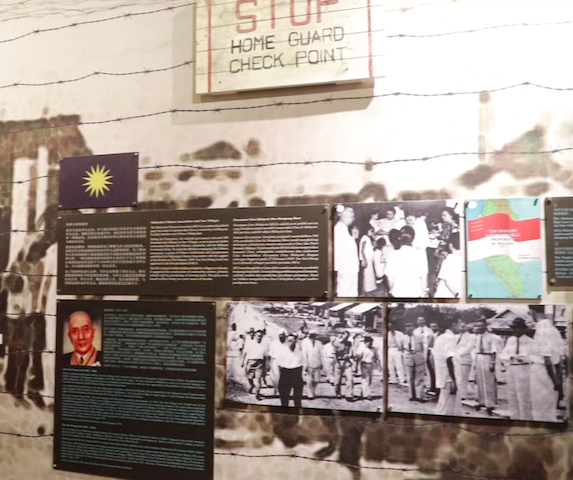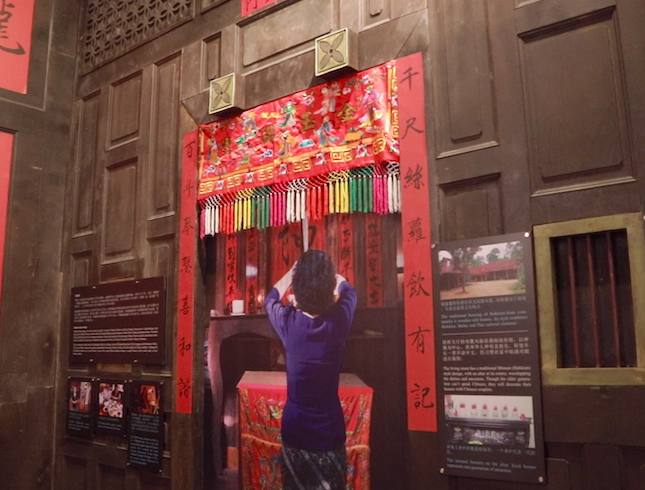Malaya’s earliest banknotes was signed by a Chinese? We visited this museum to find out!

- 898Shares
- Facebook780
- Twitter17
- LinkedIn8
- Email14
- WhatsApp79
Let’s be honest, most of us rarely pay attention to the signatures on the bank notes we own. Unless it’s time to use the autopay machine and you realise all your notes were signed by Muhammad bin Ibrahim and the machine only recognises Zeti Aziz’s signature (btw that’s fake news guys).
But what if we tell you that some of Malaya’s earliest bank notes were actually signed by… Chinese? That’s right (this isn’t fake news guys). And how did we know this? That’s because last week, we got to visit the country’s first ever Malaysian Chinese Museum in Seri Kembangan and even scored a personal tour of the place thanks to museum curator Mr Lim Kah Hoe.

Which is how we managed to discover tons of interesting fun facts about the Malaysian Chinese community, such as…
Our first 2 Finance Ministers were Malayan-Chinese, and they signed the country’s earliest banknotes
Although the museum houses thousands of valuable artifacts, what Lim considers as their prized possession turns out to be two pieces of bank notes. But of course, these aren’t the ordinary crumpled RM5 bank notes that you’d receive at the pasar malam.
The two notes on display belonged to some of Malaya’s earliest batch of bank notes that were distributed in the country in 1959 and 1961 and they feature the signatures of Malaya’s first two Finance Ministers – Tun H.S. Lee and Tun Tan Siew Sin.

That’s right, Tun H.S. Lee – the sole Chinese signatory to the Malayan Independence Agreement – he also became the country’s first Finance Minister in 1957. And right after he resigned from the post 2 years later due to ill health, it was Tun Tan Siew Sin who took over as the country’s second Finance Minister.
And today, according to Lim, their signatures on the bank notes are regarded as a source of pride for the Malaysian Chinese community, which is what the Malaysian Chinese Museum aims to document, celebrate and commemorate.

Speaking of which, here’s what else we found out about the Malaysian Chinese Museum…
It’s Malaysia’s first museum dedicated to documenting Malaysian Chinese history
Founded by the federation of Chinese Associations Malaysia aka Huazong, the museum officially opened its doors in 2018, although the idea for it actually came about much earlier in 2011. According to Lim, it was Huazong’s ex-Presidents Tan Sri Pheng Yin Huah and Tan Sri Ng Teck Fong’s idea to include a Malaysian Chinese museum inside the Huazong building.
Since Huazong is seen as the centre of Chinese culture in Malaysia, we thought having this museum would be a great way to feature and showcase the history of the Malaysian Chinese community to the public – Lim, in an interview with Cilisos.

And with a total of 16 different exhibit sections, the museum definitely delivers in presenting the history, culture and heritage of the Malaysian Chinese community. In fact, all exhibit sections at the museum are arranged according to the chronological timeline of historical events to depict a clearer picture of the growth of the Malaysian Chinese community in our country.
And in order to enhance the museum experience, visitors can get a taste of what it’s like to travel back in time and take selfies with Admiral Cheng Ho in the 15th century with the museum’s interactive Augmented Reality (AR) technology.

Pretty cool right? The Malaysian Chinese Museum is currently the country’s first and only museum that uses AR technology on their mobile app to provide visitors with an interactive experience.
And right after that, visitors can continue on their stroll down memory lane as they get transported to the 18th century where the Chinese mass migration to Malaya took place. Over here, one would be able to witness the struggles of first generation Chinese immigrants who mostly worked as tin miners and rubber tappers and were referred to as “coolies“.
The exhibits also showcase some painful memories of history, such as the Japanese Occupation in Malaya which saw the brutal tortures and murders of thousands of Chinese and the growth of the Malayan Chinese Party that led to the implementation of new villages all over Malaysia.

Heck, if you wanna know even more about the museum and their exhibits, you can check out our video on it below:
According to Lim, the museum decided to feature these events because they believe that their job is to narrate history as it is, without letting their personal sentiments get in the way of storytelling.
We want to showcase Malaysian Chinese history in a comprehensive and objective manner. And more importantly, we want to portray these events from a Malaysian Chinese perspective because we’ve realised that for so long, our stories were told by the voices of our colonisers. So for us, we want to show that as Malaysian Chinese, we’re also able to use our own voices and proudly tell our stories from our point of view – Lim, in an interview with Cilisos.
In fact, some of these stories even managed to highlight the lesser known facts about the Malaysian Chinese community, for example…
Kelantan has a Hokkien Siam community, and they’re also known as Peranakans
For starters, the term Peranakan actually refers to native-born people who have mixed local and foreign ancestry and have assimilated into the local culture of both communities.
Although generally speaking, most Malaysians are probably more familiar with Chinese Peranakans, commonly referred to as Baba Nyonyas, cos they happened to be the largest group of Peranakans out there. There are also smaller communities of Indian Peranakans and Jawi Peranakans in Malaysia.
In fact, according to Lim, the Peranakan communities in Northern Malaysian can be pretty diverse due to all the various cultures involved.
In the early days, the Hokkiens living in Kelantan were reluctant to marry the local Malays due to religious concerns. So instead, they married the Thais who lived nearby and their descendants became known as Hokkien Siams. And their language is a mix of Hokkien and Kelantanese Malay dialects, as well as some Thai – Lim, in an interview with Cilisos.

And it turns out, the Hokkien Siam community isn’t just found in Malaysia. Believe it or not, there are also traces of a similar group of Hokkien-speaking Peranakans in Phuket, where 70% of its population was once dominated by this thriving community (you can read Cilisos’ story about that here).
But trying to gather these information about various cultures was no easy task. According to Lim, the entire planning and curating process for the museum took 7 years because the curating team had to travel to places as far as Indonesia and Philippines to collect data and interview descendants of certain historical figures in order to portray an event as accurately as possible.
And that wasn’t all it took. Even though Lim revealed that most of the museum artifacts were graciously donated by the public, the team still needed to raise more funds for the museum’s construction which cost around RM6 million.

But thankfully, the project received tremendous support from the Malaysian Chinese community such as MCA and even the Chinese Embassy in Malaysia. But perhaps the most notable donation was from the Sunway tycoon Tan Sri Jeffrey Cheah, who donated RM5 million all on his own.
You’ll probably see more of the museum soon as there are plans to expand the place
In the interview, Lim also revealed to us about their plans, which are currently underway to expand phase 2 of the museum. The project is expected to cost around RM9 million and it would probably be unveiled to the public in 2 to 3 years time to give allowance for the fundraising and research process.
But for now, Lim’s goals for the museum remain simple…
We wanted to build this museum because we felt that there is a lack of interest among Malaysians when it comes to visiting museums. So, what we want to do is to use Huazong’s platform to promote and normalise the culture of visiting museums. And ultimately what we hope for is that in the future, instead of going to shopping malls, more parents would consider the idea of bringing their kids to museums on weekends – Lim, in an interview with Cilisos.

So, if you wanna learn more about Malaysian Chinese history or if you just wanna not waste your weekend away at another mall, you can always drop by the Malaysian Chinese Museum in Seri Kembangan to enjoy a fun and educational experience. But you might wanna avoid going there on the eve and first 2 days of CNY (24/1, 25/1 & 26/1) because one, you won’t be getting any angpaos and two, you won’t be getting in to the museum either cos they’re closed on those days.
But hey, after collecting angpaos right, feel free to drop by for a taste of history, because as they say: Those who forget the pasta, are doomed to reheat it… wait no-
If you enjoyed this story and want more, please subscribe to our HARI INI DALAM SEJARAH Facebook group ?
- 898Shares
- Facebook780
- Twitter17
- LinkedIn8
- Email14
- WhatsApp79



